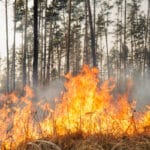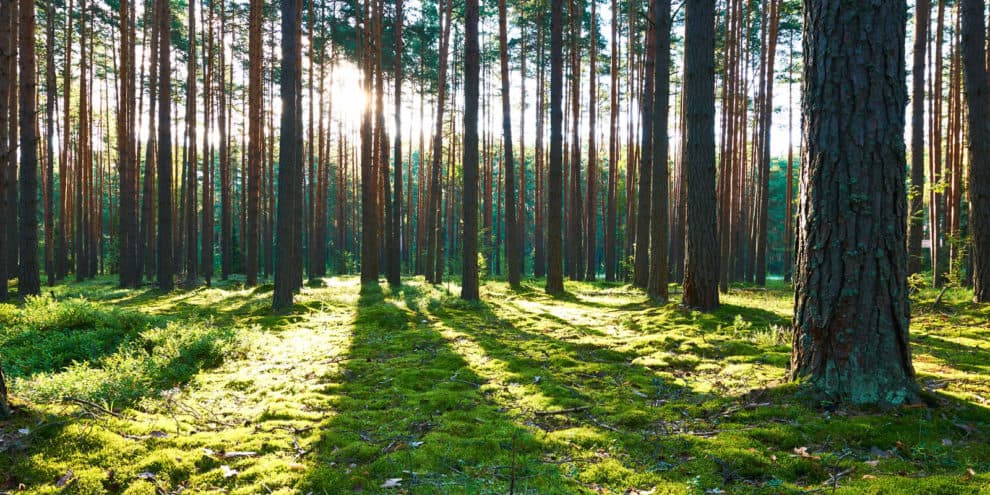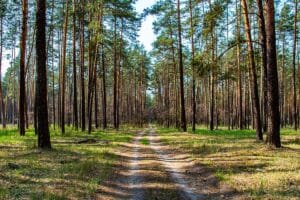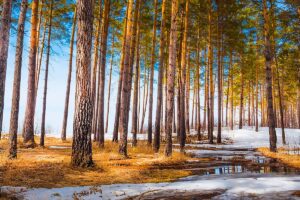Many investors see timberland as a safe place to put money. Timberland is viewed as being safe for several reasons. One reason is, compared to the stock market, it’s price tends to be stable over long periods of time. Also, money in timberland has some protection from loss due to inflation because timberland prices tend to move freely with inflation. Another reason is that trees grow constantly, adding another dimension to return.
The suitability of a property for timber investment depends on the kind of trees present, the soils, and the topography of the land.
So, if growing trees for money is why you want to buy rural land, here are a few tips:
1. Start with land that has productive soils
The difference in tons of wood grown between good soils and poor soils can be 200% over the life cycle of the investment. Our experience is that it’s hard to pay too much for productive land (or too little for poor land). Many types of soils are suitable, but like any crop, trees do better on productive soils. Contact a consulting forester or extension agent for more info on soils.
2. Avoid steep land
Besides having poor soils, steep slopes limit your options for site preparation, tree planting and harvesting. Hills are not a problem. We’re talking about land that is hard to walk up, or has visible surface rock.
3. Loblolly pine is king
Hardwood is pretty and good for wildlife. Longleaf pine is a sentimental favorite with some. But when it comes to making money, loblolly pine on good ground is the clear winner. There are some exceptions to this rule. For example, other species do better on mountainous, wet or deep sandy land. But unless you already own land like this, these exceptions can be avoided. The reason loblolly is best is because it grows the fastest of all pines, and pine has larger markets (paper & construction) than hardwoods.
4. Planting trees is better than letting nature do it
The difference in tons of wood grown by a natural forest and a planted pine forest can be 425% over the life cycle of the investment. Planting pines lets you control three variables that have a huge impact on profitability: desired species, spacing between trees, and genetics.
Natural forest (those not planted by man) tend to be a mix of pine and less desirable hardwood. When pine is planted, existing hardwood is first killed because it competes with the desired pine for resources. And, in natural forest the trees can be too close together (which limits diameter growth) or too far apart (which lowers volume & harms lumber quality with big knots). Plus, in the last 25 years, genetic scientists have given us a loblolly pine that resists disease and grows significantly faster and straighter than those found in nature. The cost of planting is well justified.
5. Timely thinning of trees in a planted forest is critical
The investment life cycle of a loblolly pine forest is about 30 years. Two or three times along the way, it’s important to control the spacing of the trees (the income is nice too). Knowing when to do this and which trees to take is why people go to forestry school. But, the reason is simple. Over the investment life cycle, pine trees pass through three distinct “price steps”. By “step”, we mean the market value ($/ton) of the wood. Each step is largely diameter dependent, and diameter growth is spacing dependent. In relative terms, there is the $5/ton step, the $20/ton step and the $40/ton step (these prices are not current market values, but are an indication of the relative change in value between steps). The faster your trees “march” through these steps, the more money you’ll make. Too many trees, and they’ll linger in the $5 step or the $20 step, sometimes for 10 extra years. Properly thinned, each tree can maximize diameter growth and has the potential to be worth 6 to 8 times more (per ton) than the first “step” where they all start.
6. Before you sell timber…
Always sell with a written contract. When thinning your trees, get at least three per-ton bids before making a decision. You’ll be paid by the ton as the trees are cut. When it’s time for the final harvest, always get an independent appraisal ahead of time. Then, let timber buyers compete. By inviting 100 timber buyers to bid on your timber, you’ll put significantly more money in your pocket (100% more is not uncommon) than if you only get a price from two or three timber buyers. And, be sure all trees are paid for in advance before harvest begins (avoid selling final harvest on a $ per-ton basis, getting paid as the trees are cut). Also, you’ll want to consider whether to handle the sale yourself, or use a consulting forester. There is not a right or wrong way, and it depends on your available time, knowledge of forestry practice, depth of your contacts and experience with the market.
7. Real estate is a big part of your timber investment
When shopping for a good timber investment, keep your “real estate hat” on. Get an appraisal or use comparable sales to make sure that the bare land price (total price less liquid market value of timber) is fair. Check on things that will affect the interest of future buyers of your land. Things like title, access, proximity to utilities, boundary line conditions, problems with adjoining landowners and the quality of the neighborhood. When buying timberland, always think ahead to the day you will sell. Problems today will likely be problems when you sell.
This preceding article is an excerpt from Tom Brickman’s e-book, “Buying Rural Land: Tips and How-to’s”, a collection of well-written, quick reads to help you find a rural property you’ll love and simplify getting it done. Download the e-book and learn from a seasoned pro with 40 years of experience.
This content may not be used or reproduced in any manner whatsoever, in part or in whole, without written permission of LANDTHINK. Use of this content without permission is a violation of federal copyright law. The articles, posts, comments, opinions and information provided by LANDTHINK are for informational and research purposes only and DOES NOT substitute or coincide with the advice of an attorney, accountant, real estate broker or any other licensed real estate professional. LANDTHINK strongly advises visitors and readers to seek their own professional guidance and advice related to buying, investing in or selling real estate.










Excellent info, especially for a novice, future land investor. I do have good knowledge for real estate (residential etc.) but when it comes to income land and timber I rather have an expert tell me a few things.
Do you have any information on how to go about purchasing land in the US that would dovetail with a reforestation/tree planting program?